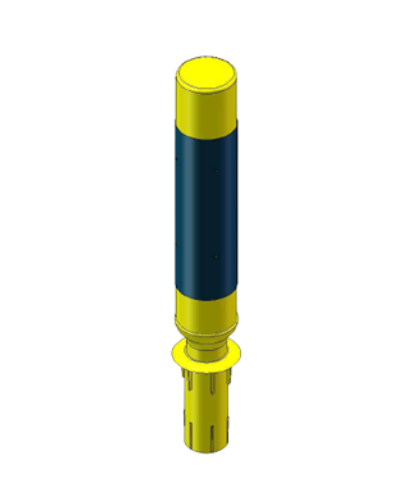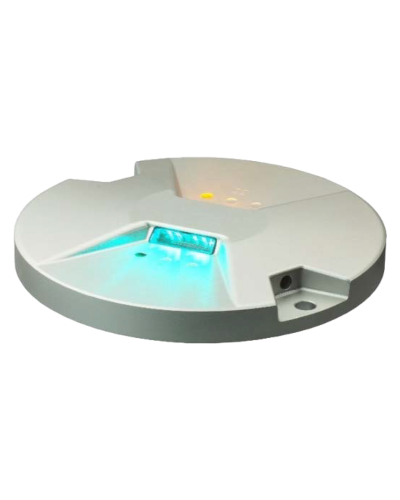Taxiway Lighting
Taxiway lighting plays a vital role in maintaining safety and efficiency in airport operations. Whether it’s day or night, these lights guide pilots across complex taxiway systems, making it possible for aircraft to navigate the runway with precision.
All Products
What is Taxiway Lighting and Why is so Important?
Taxiway lighting refers to the network of illuminated lights and markers that line the airport’s taxiways. Unlike runway lighting, which is primarily designed to guide aircraft during take-off and landing, taxiway lights help planes safely navigate between runways, terminals, and other facilities in a safe and efficient manner.
The primary purpose of Taxiway Lights is to allow pilots identifying pathways and maintain a safe distance from other aircraft, ground vehicles, and obstacles. These AGL systems are a key factor in night time operations and low-visibility conditions.
Types of Taxiway Lighting and Their Functions
To effectively guide aircraft, airports use various types of taxiway lighting, each having a different functionality. These lights, strategically placed, communicate information about direction, intersections, and potential hazards.
- Taxiway Edge Lights: are blue lights positioned along the outer edges of the taxiway. They delineate the taxiway boundaries, making it easier for pilots to understand the path and avoid changing course. Edge lights are particularly useful in low-visibility situations, where ground lines might be harder to identify.
- Centreline Lights: Centre line lights are usually green and placed directly along the centre of the taxiway. Unlike edge lights, centre line lights help guide pilots along the optimal path within the taxiway, ensuring that the aircraft remains at the centre of the taxiway, at a safety distance of obstacles.
- Stop Bar Lights: Stop bar lights are positioned at intersections where the taxiway meets the runway. These lights are unidirectional red and act as a barrier to prevent unauthorized or accidental runway incursions. Pilots are only permitted to proceed past these lights when they have permission from air traffic control. The stop bar lights are crucial in managing taxiway congestion and preventing runway incursions.
- Intermediate Holding Position Lights: are unidirectional yellow lights positioned on intermediate holding positions where there is no need to provide a stop-bar control.
- Runway guard lights: consist of two pairs of unidirectional alternately illuminated yellow lights located at each outer edge of a runway holding position. The aim of these lights is to warn pilots and drivers of vehicles operating in a taxiway that they are going to enter an operational runway.
Technology Behind Taxiway Lighting Systems
Taxiway lighting has evolved significantly with advancements in LED technology and computerized control systems. These modern innovations have improved the reliability, visibility, and energy efficiency of taxiway lights.
·LED Lights: Increasing Efficiency and Visibility
LED lighting has become a preferred choice for airports due to its low energy consumption, durability, and long lifespan. LEDs produce a consistent brightness, crucial for visibility in adverse weather. Unlike traditional incandescent bulbs, LED lights require minimal maintenance, reducing operational costs and the need for frequent replacements.
·Automated Lighting Control Systems
Advanced control systems allow airports to automate and manage taxiway lighting based on traffic and visibility conditions. By adjusting light intensity in real-time, these systems optimize visibility while reducing power usage. Automated lighting is particularly useful at large airports with complex taxiway networks, where managing lighting manually could be challenging.
Regulatory Standards for Taxiway Lighting
Applicable Standard requirements for Approach Lighting Systems are defined in Chapter M of EASA CS ADR-DSN and Chapters 5.3.17 to 5.3.23 of ICAO Annex 14 Vol. I.
AES Airport Solutions as your Taxiway Lighting Supplier
Taxiway lighting is essential for guiding aircraft safely during ground movements, ensuring smooth operations and reducing risks at every airport. At AES Airport Solutions, we excel in providing advanced taxiway lighting systems that enhance visibility, safety, and operational efficiency. With a global footprint and a reputation for excellence, we are the preferred partner for airports seeking reliable and innovative lighting solutions.
AES Airport Solutions has a track record of successfully reference of taxiway lighting systems installed at airports around the world. The expansion of the apron area at Antalya International Airport, rehabilitation of Taxiway E at Varna Airport and provision of taxiway lighting to the principal AVINOR airports among others are outstanding references.
Other Products





























